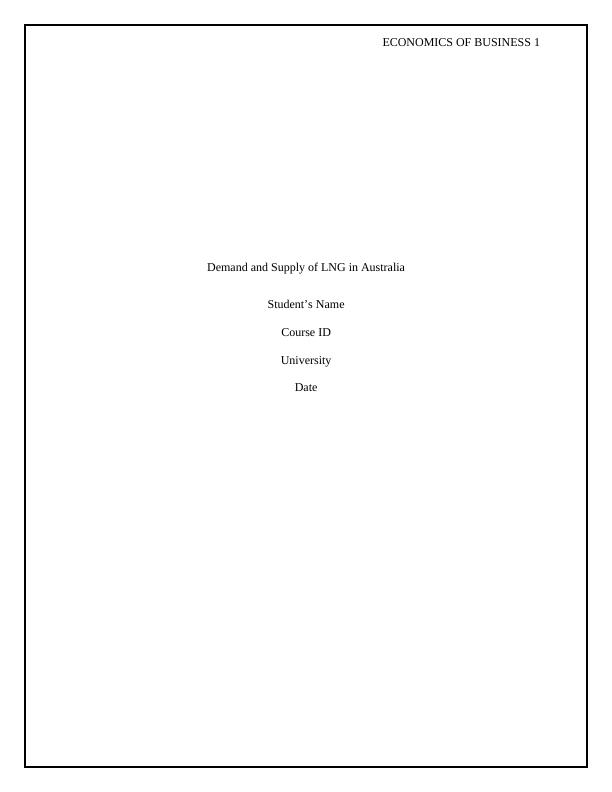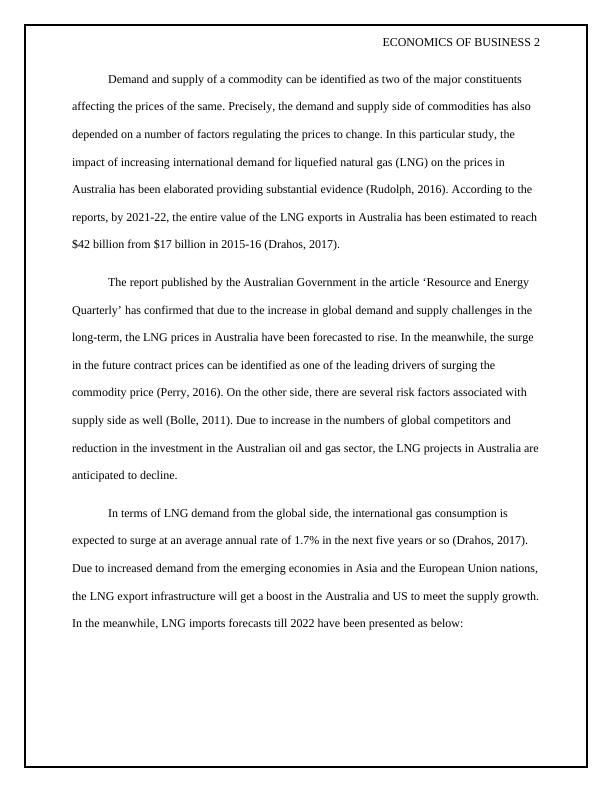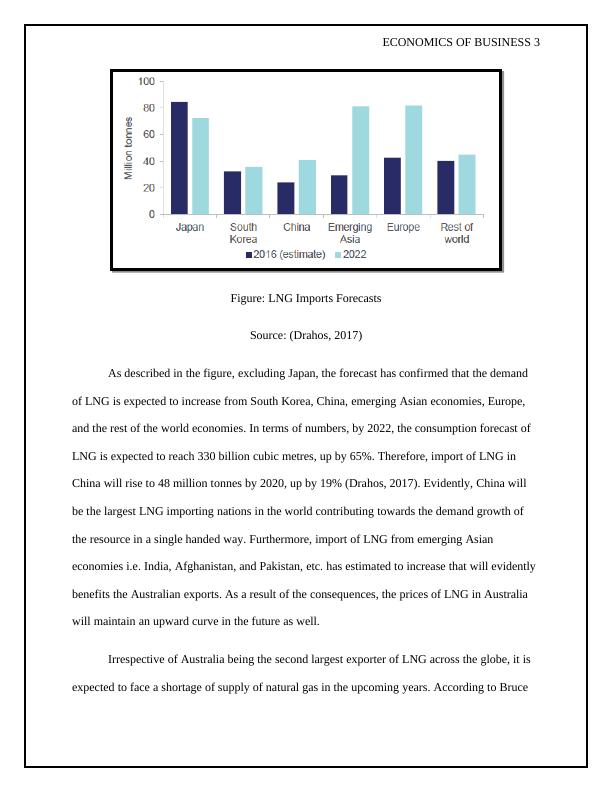HI5003 - Economics - Demand and Supply of LNG in Australia
7 Pages1463 Words43 Views
Holmes Institute Sydney
HI5003 Economics for Business (HI5003)
Added on 2020-03-13
About This Document
In this document, we will discuss the increase in global demand and supply challenges in the long-term, the LNG prices in Australia have been forecasted to rise. There are several risk factors associated with the supply side. Due to an increase in the numbers of global competitors and a reduction in the investment in the Australian oil and gas sector, the LNG projects in Australia are anticipated to decline.
HI5003 - Economics - Demand and Supply of LNG in Australia
Holmes Institute Sydney
HI5003 Economics for Business (HI5003)
Added on 2020-03-13
ShareRelated Documents
End of preview
Want to access all the pages? Upload your documents or become a member.
HI5003 - Demand and Supply of Coal in Australia
|6
|1393
|55
Demand and Supply of Coal in Australia
|6
|1163
|190
Asia Pacific Business Perspective - Assignment - HBI 560
|7
|1563
|102
ECONOMICS FOR BUSINESS 7 7 Economics for Business Name of the University Course ID
|8
|1472
|104
HI5003 - Economics for Business assignment
|7
|1570
|43
BUS102 - Economics for Business - Assignment
|6
|1440
|63



